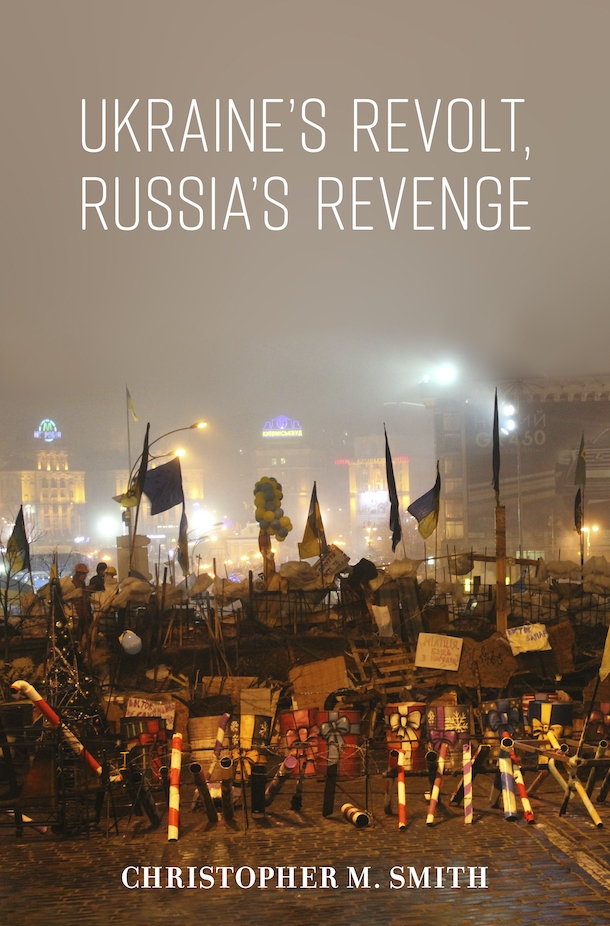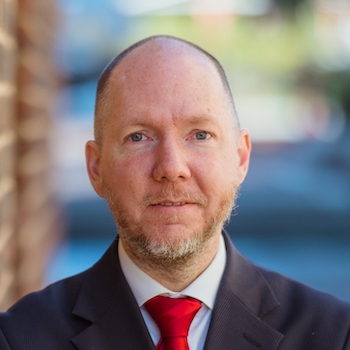
Books
‘Russian Disinformation During Euromaidan’
We were not in the least surprised that Moscow was furiously spinning developments in Kyiv. That night another “exposé” of Euromaidan appeared on Moscow’s Center TV. Slick Russian propagandists were developing several clear attack lines. First, that the protesters in Kyiv were all radical nationalists, direct successors to the World War II-era Ukrainian Insurgent Army, and the vilified Ukrainian nationalist leader Stepan Bandera who had briefly collaborated with the Germans before being imprisoned in a Nazi concentration camp. In other words, Euromaidan protesters were fascists, or “Banderovtsy.” This was guaranteed to get Russian audiences riled up.
Second, that Maidan protesters were bought and paid for by foreigners, citing the words of a Ukrainian parliamentarian: “I’ve talked to people from Dnipropetrovsk who attended a meeting of the TechCamp organization. It is an NGO, funded from the USA. They train people to stage color revolutions…About three hundred people were trained. They then saw many graduates working and organizing things in Euromaidan.” Numerous other false claims spewed forth about Euromaidan: people were prohibited from speaking Russian on the square, protesters were hungry and [were] only there for free food, Ukraine was falling apart. Most menacingly, the narrator asked, “Will the country survive another Maidan?”
Russian media attacks were not lost on the Maidanivtsi, who frequently watched as Russian TV reporters did scathingly negative, and sometimes completely fictitious, stand-ups from the Maidan. During one of my own wanderings across the Maidan, I watched a Russian reporter and cameraman walking through the square, describing everyone within earshot as starving fascist alcoholics or drug addicts paid in food by Western intelligence services for their participation. Had Maidan not maintained such a peace-and-love vibe in those early days, things could have gotten ugly for such “reporters.” But mostly the Maidanivtsi tried to respond with wit and humor. At one point on live Russian TV, one protester walked up to one of these reporters with a small metal statuette, announcing, “Please pass this Oscar to the Rossiya One Channel and to [propagandistic Russian news anchor] Dmitry Kiselev for the lies and nonsense you are telling people about Maidan.”
On December 10, Assistant Secretary of State Victoria Nuland arrived back in Kyiv. Unlike her visit less than a week before, during which she attended a major multilateral event, this visit focused solely on Ukraine. EU high representative and foreign policy chief Catherine Ashton was also in town, enabling the two to coordinate their messages in key meetings. The Political Section had arranged a top-level schedule of meetings for Nuland with Ukraine’s leaders, including [Viktor] Yanukovych, as well as with opposition leaders, business elite, and key religious figures. Her message was consistent—the Ukrainian government should take the protesters’ concerns seriously and work cooperatively with them to deescalate the security situation peacefully. Further violence was not acceptable and would meet with the swift condemnation of the international community. Both Yanukovych and protest leaders should back away from their maximalist positions. The time for real dialogue and compromise was now. It was a simple and powerful message delivered during a whirlwind round of diplomacy intended to forestall any further violence. But while our assistant secretary was still on the ground, some in the Ukrainian government had already hatched other plans.

They came that night. Berkut [police] and other Interior Ministry troops with riot shields began a coordinated push from multiple directions onto the square, attempting to force the protesters away from their barricades and pen them tightly into the middle of the square. Presumably, beatings, mass arrests, or both would follow. What happened next looked like a giant desperate rugby scrum. Protesters locked arms and used their muscle power to push back the government forces. Recent snow made it impossible for either side to secure a solid footing on the granite paving stones or on the street, imparting a recklessly fluid undulation to the pushing match as shoes and boots skidded back and forth across the snow-covered square. Firing canisters of tear gas, government forces broke through the Institutska barricade. The advancing troops ripped apart the makeshift barricades and marched forward. Where the protest camp’s barricades were breached, titushky [Yanukovych’s hired guns] quickly moved in to destroy tents, chairs, camp stoves, or anything else.
After seizing the Institutska barricade, Interior Ministry troops retook the Trade Unions Building, reportedly ransacking the offices the Maidanivtsi had set up inside with [the] permission of the building’s owners. But their assault on city hall failed. Hour after hour, the Maidan SDF repelled government forces trying to enter the building. In a reminder that Kyiv is a medieval city, the church bells at St. Michael’s monastery, where priests a few weeks before had given protesters refuge from the Berkut’s batons, began ringing around 1:00 a.m. to sound the alarm. The church had taken the protesters’ side again. Most Kyiv residents had never heard church bells at night, and it was easy to guess what must be going on. During the all-night struggle, additional thousands of protesters poured onto the square. Maidan wasn’t shrinking from the fight—it was expanding. By dawn, an estimated ten thousand Maidanivtsi were on the square. Secretary of State John Kerry’s statement denouncing the violence was read to cheers on the Maidan stage.
After failing to retake city hall and still encountering massive resistance on the square, the Berkut and Interior Ministry forces began pulling back around 10:00 a.m. the next morning. By 11:00, there was almost no police presence anywhere around the protest zone. The Maidanivtsi immediately began rebuilding their barricades, learning what worked and what didn’t, and placing stronger makeshift fortifications in new positions. Local press reported that fifteen people were hospitalized due to injuries that night.
A massive pushing match seemed an unusual form of political struggle, like using a game of tug-of-war to determine the fate of the country. Both sides desperately wanted to avoid being seen as responsible for escalating the violence. That was a sure political loser. By using only shields, and not batons, government forces appeared to be in [a] defensive mode. During the struggle for city hall, someone had thrown Molotov cocktails out a second-story window onto Berkut troops below. The Maidanivtsi and the political opposition said it was a paid provocateur whom they identified and expelled. Most naively hoped that the confrontation would stay at the level of the scrum, knowing full well that the government had much more lethal force available if it chose to use it.
After the unsuccessful effort to physically push the Maidanivtsi from the square, Assistant Secretary Nuland and Ambassador Pyatt visited Maidan in the morning. After a full day of high-level diplomacy aimed at securing Ukraine’s commitment to avoid violence and begin a real dialogue between the government and opposition, the “scrum” represented the Yanukovych government’s largest show of force against Maidan since November 30. It was done while both Nuland and Ashton were still on the ground, which couldn’t have been a coincidence. The action was an undiplomatic slap in the face, demonstrating that the Yanukovych administration would do whatever it wanted whenever it wanted.
Excerpted from Ukraine’s Revolt, Russia’s Revenge by Christopher M. Smith. Copyright © 2022 by Christopher M. Smith. Excerpted with permission by Brookings Institution Press.
